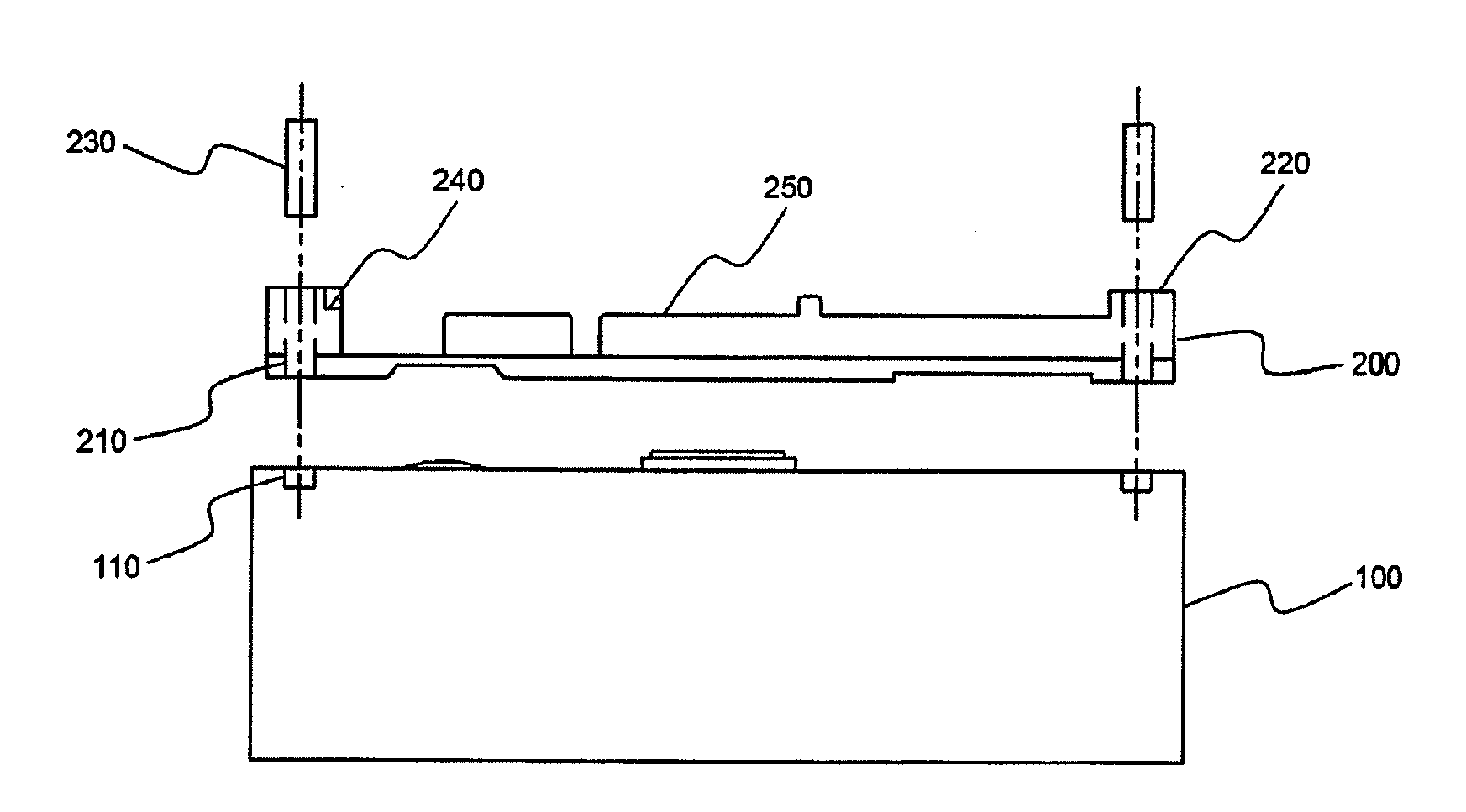Secondary battery pack having excellent production process property and structural stability
a technology of production process and structural stability, applied in the direction of batteries, sustainable manufacturing/processing, cell components, etc., can solve the problems of high degree of technical skill in welding or soldering process, high degree of safety of lithium secondary battery, and high degree of heat or explosion of lithium secondary battery. to achieve the effect of maximizing the
- Summary
- Abstract
- Description
- Claims
- Application Information
AI Technical Summary
Benefits of technology
Problems solved by technology
Method used
Image
Examples
example 1
[0082]Slurry, prepared by adding lithium cobalt oxide, PVdf, and a conducting agent in a generally known composition ratio, was coated on an aluminum foil to manufacture cathodes. Slurry, prepared by adding graphite, PVdf, and a conducting agent in a generally known composition ratio, was coated on a copper foil to manufacture anodes.
[0083]Separators, having a size slightly greater than that of the cathodes and the anodes, were disposed respectively between the cathodes and the anodes to manufacture an electrode assembly. The manufactured electrode assembly was mounted in a prismatic aluminum battery container. A battery container cover was mounted to the battery container, an electrolyte was injected into the battery container through an injection port, and the injection port was hermetically sealed, to manufacture a battery cell.
[0084]An insulative mounting member was placed on the top of the battery cell, such that through-holes, formed at the insulative mounting member, were ali...
example 2
[0086]A secondary battery pack was manufactured in the same manner as Example 1 except that screws, as coupling members, were threadedly inserted into the coupling grooves through the through-holes, as shown in FIG. 1, such that the insulative mounting member was coupled to the battery cell.
experimental example 1
[0088]Bending tests were carried out on 20 battery packs manufactured according to Example 1, 20 battery packs manufactured according to Example 2, and 20 battery packs manufactured according to Comparative example 1, to measure the coupling strength between the battery cell of each battery pack and the insulative mounting member coupled to the battery cell (See FIGS. 14 and 15). Specifically, load applied to the middle of each secondary battery pack was gradually increased, while the top cap and the bottom cap of each secondary battery pack were fixed, to measure the magnitudes of the load when the battery packs broke. The experiment results are indicated in Table 1 below.
TABLE 1Breaking loadComparative(kgf)Example 1Example 2example 1Less than 2500626 to 30001231 to 3500235 to 4500—45 to 5057—50 to 551311—More than 5522—
[0089]As can be seen from Table 1 above, the coupling force of the battery packs manufactured according to Example 1 and Example 2 was greatly improved as compared ...
PUM
| Property | Measurement | Unit |
|---|---|---|
| angle | aaaaa | aaaaa |
| size | aaaaa | aaaaa |
| height | aaaaa | aaaaa |
Abstract
Description
Claims
Application Information
 Login to View More
Login to View More - R&D
- Intellectual Property
- Life Sciences
- Materials
- Tech Scout
- Unparalleled Data Quality
- Higher Quality Content
- 60% Fewer Hallucinations
Browse by: Latest US Patents, China's latest patents, Technical Efficacy Thesaurus, Application Domain, Technology Topic, Popular Technical Reports.
© 2025 PatSnap. All rights reserved.Legal|Privacy policy|Modern Slavery Act Transparency Statement|Sitemap|About US| Contact US: help@patsnap.com



